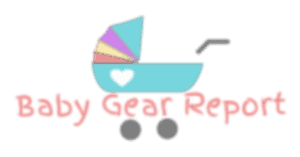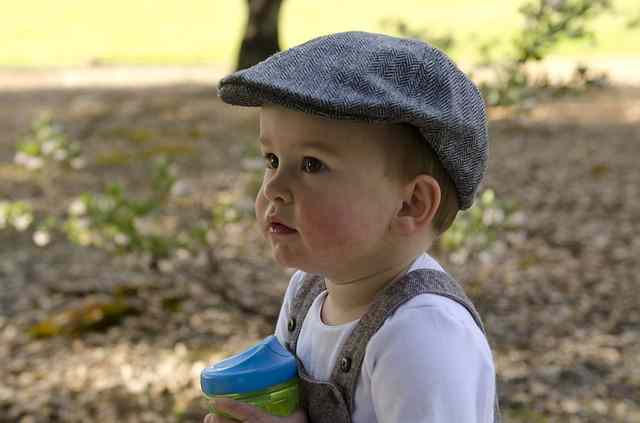Recently my wife and I were wondering when we should start transitioning our son off of bottles. He’s already seven months, and can easily feed himself with a bottle. Since he’s handling a bottle so easily, is it time to start teaching him to use a cup instead. We want to make sure we help him develop new skills well and don’t hold him back if he’s ready. Unfortunately I had no idea when you start with sippy cups. Until this moment, I hadn’t even considered it. So I did a little research, and here’s what I found out.
The right sippy cup for a child, and the right time to introduce a sippy cup, all depends on the child. The age introduction is between 6 months and a year. You start with a cup that is similar to a bottle first, and gradually move to more advanced cups.
Why use a sippy cup instead of a bottle?
We all use cups every day to hold our drinks. Once your child is old enough to use a cup, they should be introduced to it. This will help them learn what a cup is, and develop the coordination needed to use one. This is an important advancement for your child as they continue to learn how to interact with the world around them, and gives them the skills needed to function for the rest of their life.
Transitioning away from the bottle toward sippy cups is also important for your child’s dental health. According to the American Dental Association (ADA) tooth decay can occur as soon as a baby’s teeth appear, which is usually around 6 months. There is something known as “baby bottle tooth decay” which is “frequent and prolonged exposure of a baby’s teeth to liquids containing sugar”. Because of the dangers of this, the ADA recommends that you transition to cups by the child’s first birthday. In case you are interested in reading more about this, here is the document published by the ADA concerning this.
One very important note in that document that I was surprised by is that the ADA does not like “no-spill” sippy cups (I’ll discuss these types of cups later). At least, they don’t see them as a replacement to the bottle but instead see them as “nothing more than baby bottles in disguise”. This is because no-spill cups still require the child to suck instead of sip. So while transitioning your baby to sippy cups, know that the real goal is to have your child sipping and not sucking by their first birthday.
What sippy cup is best to start with?
Even though the ADA describes no-spill sippy cups as disguised baby bottles, they are still a great introduction for your child. A no-spill cup, as its name implies, is something that looks like a cup and allows your child to drink from it, but won’t spill if it falls over. They are a blessing while your child is still developing their coordination to hold a cup to their mouth and drink.
Although they are great to help with the transition, you don’t need a no-spill cup. Some parents with a lot of patience and time can transition their child directly from bottles to open cups. Just know that it will take a lot of time, practice, and spilt liquids. So maybe use water or some other easy to clean liquid if you want to do this.
I think I prefer the no-spill cups to start, so that’s what I’m going to focus on. So what is important to look for there? Again, it all depends on the child and their preferences.
Right now your child is likely very familiar with a bottle, the way it feels and tastes in their mouth and how to get the liquid out. If you immediately give them a sippy cup with a hard plastic top, they probably won’t know what it is or how to use it. Therefore there are many cups out there with soft, pliable spouts. These will feel a lot like a bottle, and therefore your child will likely feel very comfortable with it quickly. If your child is currently teething, you might want to look for bite-proof spouts so that there’s less fear of the top being torn.
The size and shape of the cup is also important. It shouldn’t be too big or heavy for your child to hold. It’s also very helpful to find a cup with handles on it to make maneuvering the cup a little easier for your child. Handles on the cup will reduce the likelihood of them accidentally dropping the cup. Eventually those handles will need to go, but for now they can really help.
Be aware though that your child might not accept a no-spill cup. Why? Well these cups use either surface tension or a valve to hold the liquid in. Suction force is needed to overcome these obstacles and force liquid out, and there might be some frustration when the child is sucking on the cup but not much liquid is coming out. If you are concerned about this, then you might want to ensure that your cups have removable valves.
What sippy cup is best for toddlers?
As your child gets older and is able to handle the basic sippy cup easily, then you should transition then to more advanced cups. Remember that no-spill sippy cups can still promote tooth decay, so you need to transition children off of those as soon as they are ready.
So what is a more advanced sippy cup?
It’s a cup that still has a lid to help prevent or minimize spills, but doesn’t prevent spills. A cup that requires the children to sip, because if they continued to suck they would get too much liquid and choke a little.
It’s possible that your child doesn’t really like the spout. You can offer them cups with straws instead. There’s also cups with large, flat holes in the lid which makes the cups look a lot like the one you get from Starbucks. Maybe have some of each and interchange them to help your child get used to them all. Eventually they will probably gravitate to the type they like the most, and you can then focus on those.
If you do get a cup with a straw, look for weighted straws. These straws have a weight on the end which will help ensure that your child is able to drink even if the cup is significantly tilted.
If your child is eating dry cereal, or other snacks, there are also cups available that have a snack catcher built into the lid. These catchers will hold the cereal and allow your child to pull some out without letting the cereal fall out if the cup tips over.
Can sippy cups be dangerous? What kind of sippy cups should I avoid?
Most sippy cups are made from plastic. Because they are plastic, there’s the risk that they have harmful chemicals, such as BPA, Phthalates, BPS, BPF, or polyvinylchloride, which can seep into their drink. These chemicals are harmful because they introduce the risk of developmental problems or medical conditions.
When looking at a plastic sippy cup, be sure to investigate whether or not the plastic they use has any of these chemicals. If they don’t, it’s likely that the manufacturer or seller is eager to tell you that. If you are concerned about this and want to avoid plastic, there are options available. You can find cups whose bodies are made with stainless steel or glass, and have a top made with silicone.

